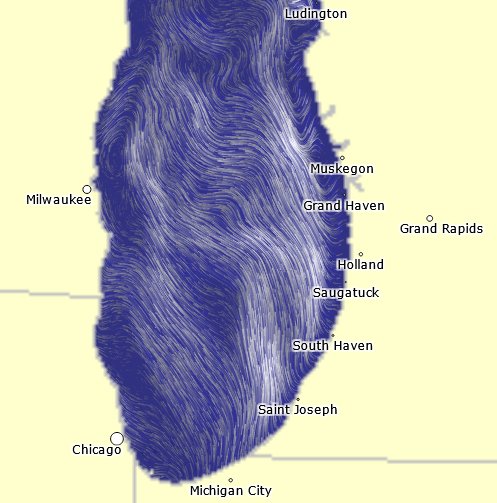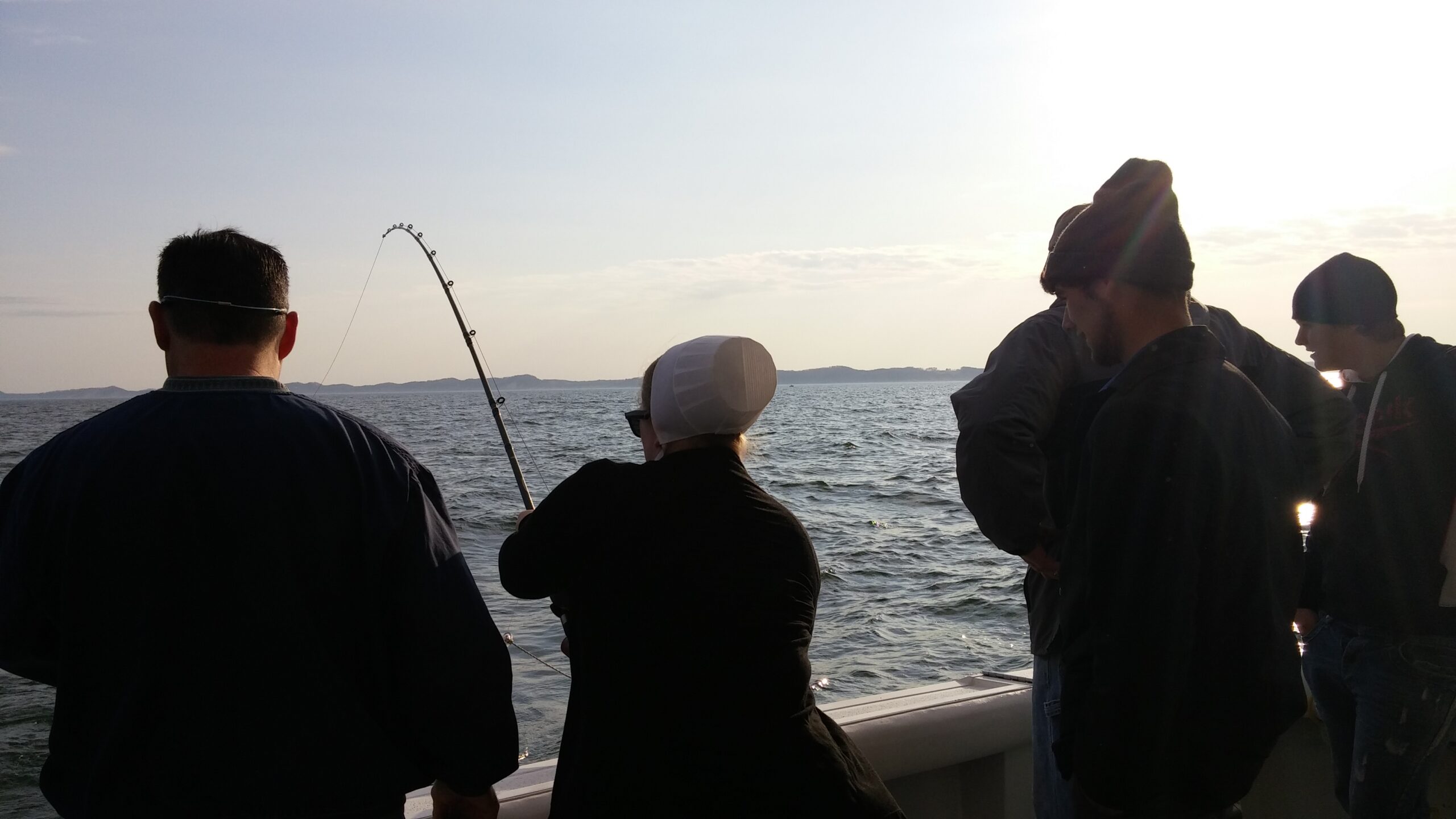Lake Michigan, renowned for its abundant salmon populations, offers anglers an exhilarating experience through trolling techniques. Trolling is the most widely practiced and effective method for targeting salmon in this vast and diverse lake. Let’s explore some of the basics of the art of trolling and delve into essential strategies that will enhance your chances of success in salmon fishing on Lake Michigan.
Selecting the Right Equipment

To embark on a successful trolling adventure, it is crucial to equip yourself with the appropriate gear. Start with a sturdy and reliable trolling rod and reel combination designed for salmon fishing. Opt for medium to heavy-action rods with a line capacity capable of handling the weight and strength of salmon; this probably means something in the 17-20 lb test range. Choose reels with a smooth drag system for seamless line retrieval. Additionally, ensure that your tackle box includes a variety of trolling lures (most commonly spoons), plugs, flashers, and dodges along with flies, all in different sizes, colors, and patterns. This assortment allows you to match the prevailing conditions and imitate the preferred prey of salmon in Lake Michigan. Greens and blues are the most commonly productive colors in the summer fishing season.
Mastering Speed and Depth Control
Achieving the optimal speed and depth at which to present your bait is vital for successful trolling. Experiment with different trolling speeds, typically ranging from 2 to 3 miles per hour, to find the sweet spot that entices salmon to strike. Use a trolling speedometer or GPS to maintain a consistent speed and adjust accordingly.
Pay attention to the water temperature and the depth at which salmon are feeding. Downriggers, diving planers, or lead-core lines can help you reach the desired depth and ensure your bait is in the strike zone. Adjust the length of line behind the boat, known as the setback, to fine-tune your presentation. By mastering speed and depth control, you increase your chances of attracting salmon and maximizing your catch.
If you aren’t catching fish, vary your speed up and down within a range of 2.2 MPH to 3.5 MPH. It will many times make the difference.
Location, Location, Location
Identifying productive areas and understanding the movements of salmon are key to a successful trolling expedition. Salmon are often found near drop-offs, underwater structures, and temperature transitions, where they seek cooler waters and abundant food sources. Research local fishing reports or consult with experienced anglers to discover hotspots on Lake Michigan. Keep an eye out for signs of baitfish activity, such as seagulls diving or surface disturbances, as these indicate potential feeding grounds for salmon. Chartplotters or fish finders can assist in locating underwater structures and determining the presence of fish. By honing your ability to identify prime locations, you increase your chances of encountering active salmon and enjoying a rewarding fishing experience.
 Where there isn’t much structure, currents plan a big part in catching fish. You can find a great side with information on great lakes currents at – https://www.glerl.noaa.gov//res/glcfs/currents/.
Where there isn’t much structure, currents plan a big part in catching fish. You can find a great side with information on great lakes currents at – https://www.glerl.noaa.gov//res/glcfs/currents/.
Depth and water temperature play a big part in catching salmon also. Finding where the currents and temperatures deliver bait fish consistently to waiting salmon is key to finding where you will catch them.
I like to think of fish in the lake like any good stream fish might be. They tend to put their noses into the currents. Fishing into the prevailing at depth current many times is the best strategy. Don’t be afraid to adjust the direction of your trolls. You might find you catch fish on a north troll but not a south one or an east versus west on any given day.
Adapting to Conditions and Seasonal Patterns
Lake Michigan’s fishing conditions and salmon behavior vary throughout the year, necessitating adaptability. Familiarize yourself with the seasonal patterns and adjust your trolling strategy accordingly. During the spring and early summer, target shallower waters near river mouths and harbors as salmon migrate and feed closer to shore. As summer progresses, salmon often move to deeper waters and offshore areas. Be mindful of changing water temperatures and adjust your trolling depths accordingly. Pay attention to weather conditions, as salmon may respond differently under overcast skies versus bright sunshine. In the fall, you will find salmon staging in front of rivers for spawning again in late August before they head upstream for the spawning run.
 Keep track of successful lure colors and patterns for different seasons, as salmon preferences can shift. Adapting to the conditions and understanding seasonal patterns will increase your chances of consistent success in trolling for salmon on Lake Michigan.
Keep track of successful lure colors and patterns for different seasons, as salmon preferences can shift. Adapting to the conditions and understanding seasonal patterns will increase your chances of consistent success in trolling for salmon on Lake Michigan.
Trolling is a time-tested and effective technique for salmon fishing on Lake Michigan. By selecting the right equipment, mastering speed and depth control, identifying prime locations, and adapting to conditions and seasonal patterns, you can significantly enhance your chances of a successful and memorable salmon fishing adventure.
Now, you can work to do this all on your own, or, of course, you can call us to set up your next fishing adventure in Saugatuck Michigan with professionals who do all the work and keep track of the fish for you. Call us today and let us know when we can put you on some of the most enjoyable and successful fishing in Lake Michigan.
